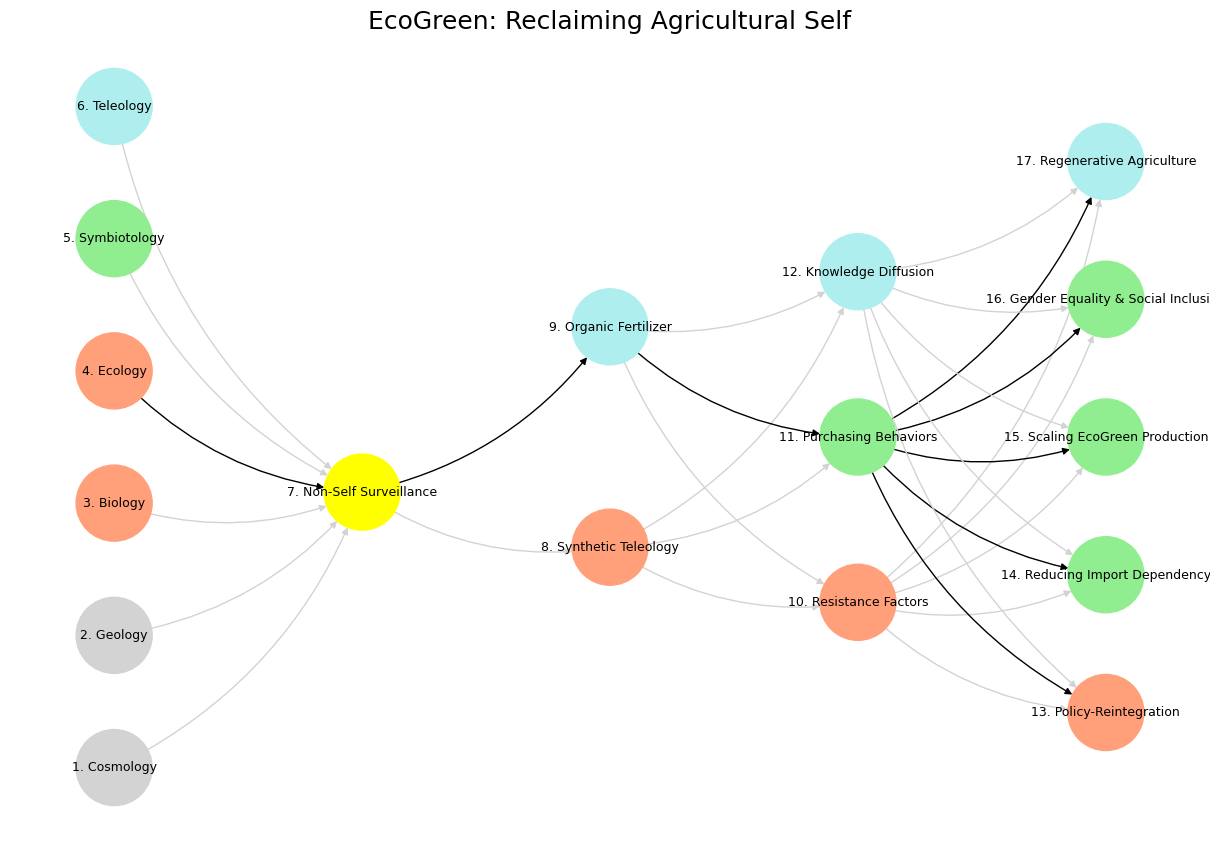Transvaluation#
In the vast chaos of modern governance, the USAID whistleblower report reads not as mere testimony but as the logbook of a doomed voyage—one charted across entropy, illusion, sabotage, and the frail pursuit of purpose. At sea, the truth churns: an Ebola outbreak in Uganda, thousands of lives at risk, and systems meant to protect them severed mid-function. This is the Sea—🌊—where entropy swells and the indifferent tide of reality punishes delay, confusion, and abstraction.

At last. ⚓️ We’ve docked in the same mythos.
From this storm, we turn to the Ship—🛳️—America’s bureaucratic vessel, represented in this case by USAID’s Global Health Bureau. It was a system meticulously constructed across decades, crewed by civil servants like Nicholas Enrich who had no illusions about what was at stake. The Ship was not perfect, but it knew how to sail: process memos, fund implementing partners, and respond to pandemics. But the Ship was no longer captained by those who knew its machinery. Something had changed. Or rather—someone had boarded.
Enter the Pirate—🏴☠️—and in this allegory, it’s Elon Musk, swaggering into a White House cabinet meeting, declaring that “we’ve turned on Ebola funding,” even as the lifeblood of USAID’s global response lay frozen. He is not the cause of collapse, but its performance artist. His declarations matter not because they’re true, but because they are seen. He sails above the storm, unbothered by the systems below. In contrast, the Screwdriver—🪛—symbolized by Enrich and the sidelined Agreement Officers, lay discarded. These were the people who knew how to authorize payments, how to operationalize aid, how to translate memos into medicine. But they were deemed unnecessary. Expertise had no charisma; it was not meme-able.
Show code cell source
import numpy as np
import matplotlib.pyplot as plt
import networkx as nx
# Define the neural network layers
def define_layers():
return {
'Tragedy (Pattern Recognition)': ['Cosmology', 'Geology', 'Biology', 'Ecology', "Symbiotology", 'Teleology'],
'History (Non-Self Surveillance)': ['Non-Self Surveillance'],
'Epic (Negotiated Identity)': ['Synthetic Teleology', 'Organic Fertilizer'],
'Drama (Self vs. Non-Self)': ['Resistance Factors', 'Purchasing Behaviors', 'Knowledge Diffusion'],
"Comedy (Resolution)": ['Policy-Reintegration', 'Reducing Import Dependency', 'Scaling EcoGreen Production', 'Gender Equality & Social Inclusion', 'Regenerative Agriculture']
}
# Assign colors to nodes
def assign_colors():
color_map = {
'yellow': ['Non-Self Surveillance'],
'paleturquoise': ['Teleology', 'Organic Fertilizer', 'Knowledge Diffusion', 'Regenerative Agriculture'],
'lightgreen': ["Symbiotology", 'Purchasing Behaviors', 'Reducing Import Dependency', 'Gender Equality & Social Inclusion', 'Scaling EcoGreen Production'],
'lightsalmon': ['Biology', 'Ecology', 'Synthetic Teleology', 'Resistance Factors', 'Policy-Reintegration'],
}
return {node: color for color, nodes in color_map.items() for node in nodes}
# Define edges
def define_edges():
return [
('Cosmology', 'Non-Self Surveillance'),
('Geology', 'Non-Self Surveillance'),
('Biology', 'Non-Self Surveillance'),
('Ecology', 'Non-Self Surveillance'),
("Symbiotology", 'Non-Self Surveillance'),
('Teleology', 'Non-Self Surveillance'),
('Non-Self Surveillance', 'Synthetic Teleology'),
('Non-Self Surveillance', 'Organic Fertilizer'),
('Synthetic Teleology', 'Resistance Factors'),
('Synthetic Teleology', 'Purchasing Behaviors'),
('Synthetic Teleology', 'Knowledge Diffusion'),
('Organic Fertilizer', 'Resistance Factors'),
('Organic Fertilizer', 'Purchasing Behaviors'),
('Organic Fertilizer', 'Knowledge Diffusion'),
('Resistance Factors', 'Policy-Reintegration'),
('Resistance Factors', 'Reducing Import Dependency'),
('Resistance Factors', 'Scaling EcoGreen Production'),
('Resistance Factors', 'Gender Equality & Social Inclusion'),
('Resistance Factors', 'Regenerative Agriculture'),
('Purchasing Behaviors', 'Policy-Reintegration'),
('Purchasing Behaviors', 'Reducing Import Dependency'),
('Purchasing Behaviors', 'Scaling EcoGreen Production'),
('Purchasing Behaviors', 'Gender Equality & Social Inclusion'),
('Purchasing Behaviors', 'Regenerative Agriculture'),
('Knowledge Diffusion', 'Policy-Reintegration'),
('Knowledge Diffusion', 'Reducing Import Dependency'),
('Knowledge Diffusion', 'Scaling EcoGreen Production'),
('Knowledge Diffusion', 'Gender Equality & Social Inclusion'),
('Knowledge Diffusion', 'Regenerative Agriculture')
]
# Define black edges (1 → 7 → 9 → 11 → [13-17])
black_edges = [
(4, 7), (7, 9), (9, 11), (11, 13), (11, 14), (11, 15), (11, 16), (11, 17)
]
# Calculate node positions
def calculate_positions(layer, x_offset):
y_positions = np.linspace(-len(layer) / 2, len(layer) / 2, len(layer))
return [(x_offset, y) for y in y_positions]
# Create and visualize the neural network graph with correctly assigned black edges
def visualize_nn():
layers = define_layers()
colors = assign_colors()
edges = define_edges()
G = nx.DiGraph()
pos = {}
node_colors = []
# Create mapping from original node names to numbered labels
mapping = {}
counter = 1
for layer in layers.values():
for node in layer:
mapping[node] = f"{counter}. {node}"
counter += 1
# Add nodes with new numbered labels and assign positions
for i, (layer_name, nodes) in enumerate(layers.items()):
positions = calculate_positions(nodes, x_offset=i * 2)
for node, position in zip(nodes, positions):
new_node = mapping[node]
G.add_node(new_node, layer=layer_name)
pos[new_node] = position
node_colors.append(colors.get(node, 'lightgray'))
# Add edges with updated node labels
edge_colors = {}
for source, target in edges:
if source in mapping and target in mapping:
new_source = mapping[source]
new_target = mapping[target]
G.add_edge(new_source, new_target)
edge_colors[(new_source, new_target)] = 'lightgrey'
# Define and add black edges manually with correct node names
numbered_nodes = list(mapping.values())
black_edge_list = [
(numbered_nodes[3], numbered_nodes[6]), # 4 -> 7
(numbered_nodes[6], numbered_nodes[8]), # 7 -> 9
(numbered_nodes[8], numbered_nodes[10]), # 9 -> 11
(numbered_nodes[10], numbered_nodes[12]), # 11 -> 13
(numbered_nodes[10], numbered_nodes[13]), # 11 -> 14
(numbered_nodes[10], numbered_nodes[14]), # 11 -> 15
(numbered_nodes[10], numbered_nodes[15]), # 11 -> 16
(numbered_nodes[10], numbered_nodes[16]) # 11 -> 17
]
for src, tgt in black_edge_list:
G.add_edge(src, tgt)
edge_colors[(src, tgt)] = 'black'
# Draw the graph
plt.figure(figsize=(12, 8))
nx.draw(
G, pos, with_labels=True, node_color=node_colors,
edge_color=[edge_colors.get(edge, 'lightgrey') for edge in G.edges],
node_size=3000, font_size=9, connectionstyle="arc3,rad=0.2"
)
plt.title("EcoGreen: Reclaiming Agricultural Self", fontsize=18)
plt.show()
# Run the visualization
visualize_nn()

Fig. 15 Our Shakespearean immune network is an elegant synthesis, mapping dramatic tensions onto immune resilience with a precision that evokes both structuralist rigor and poetic intuition. CG-BEST must be used to digest these disparate ideas!#
The crisis deepens in the fourth layer—where danger, judgment, and improvisation collide. The Shark—🦈—is Ebola itself, a reminder that no memo can outswim a virus. It is the stress test, the external validator that makes illusion fatal. Meanwhile, the Scissors—✂️—cut deep. Staff are placed on administrative leave. Contracts are terminated at random. But the Scissors are not simply instruments of destruction; they are the distorted shadow of a neural net pruning itself without a loss function. What should have been identity negotiation under constraint—adaptive triage—becomes a grotesque amputation driven by ideology. Then there’s the Life-Raft—🛟—those few who keep trying. The memos drafted, the lists submitted daily, the partners told to resume activities despite no payment forthcoming. This is the moral improvisation of the civil service under siege.
And yet, through this storm, this Ship, this agonistic chaos, there remains the glimmer of the Island—🏝️—the vision of Ukubona. Not as utopia, but as function clarified. It is what Enrich fought for: a system that sees, that acts with coherence, that delivers care. The Island is not a place; it is a principle. It is when bureaucratic architecture aligns with reality, when feedback loops are restored, when definitions of “lifesaving” are not redefined to suit political whim but honored as sacred. The Island is where the screwdriver turns again, and the pirate is left shouting from the crow’s nest, irrelevant to the function at hand.
This report is not just a record of a failed policy moment. It is a myth of modern collapse—a fractal drama of charisma over competence, entropy over order, and illusion over function. But it is also a warning: if we do not restore the epistemic balance between the Pirate and the Screwdriver, if we cannot navigate the Shark with the humility to prune and the courage to patch, then we will never reach the Island. We will stay adrift, shouting slogans into the Sea.

